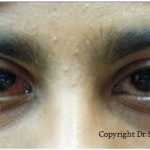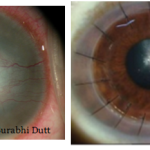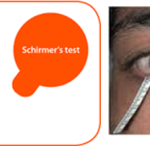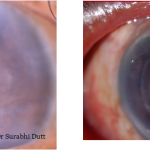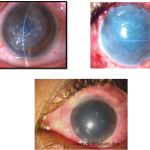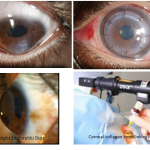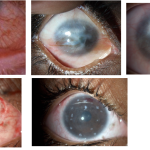Corneal Disease Treatment
The cornea is the eye’s outermost layer. It is the clear, dome-shaped surface that covers the front of the eye. It is responsible for more than 2/3rd of the eye’s focusing power. Unlike most tissues in the body, the cornea contains no blood vessels to nourish or protect it against infection. Instead, the cornea receives its nourishment from the tears and aqueous humor that fills the chamber behind it. To see well, all layers of the cornea must be free of any cloudy or opaque areas. When cornea becomes cloudy due to disease, injury, infection or malnutrition, vision is significantly lost or reduced.
Corneal blindness is the fourth leading cause of blindness in India. A majority of such patients are children. Treating corneal blindness is possible through cornea transplant. In this treatment, a healthy cornea is transplanted in place of a diseased cornea in entirety through (penetrating keratoplasty) or in part (lamellar keratoplasty). Since artificial corneas are not available, corneas have to be harvested only through eye donation
Conjunctivitis: Conjunctiva is a translucent mucous membrane which lines the posterior surface of the eyelids and anterior aspect of the eyeball. A group of diseases that cause swelling, itching, burning and redness of the conjunctiva are termed as conjunctivitis. It is an inflammation of the conjunctiva associated with a discharge which may be watery, mucoid, mucopurulent or purulent. It can spread from one person to another if proper precautions are not taken.
Dystrophy: These are inborn/ inherited genetic disorders which can cause severe visual impairment, while a few can go un-noticed and discovered on routine examination. These may require intervention either in the form of RGP contact lenses or more symptomatic cases may need Deep Anterior Lamellar Keratoplasty(DALK)
Pterygium in advanced cases can deteriorate vision by encroaching onto cornea. Surgical management is the only option for such patients. Visitech offers the most advanced pterygium surgery with conjunctival autografting using autologous blood. It has high success rate, very safe and excellent results.
Dryness of eyes is a very common problem however sadly under-diagnosed. It requires a detailed ocular examination along with quantitative assessment of the dryness. The most common systemic condition strongly responsible for dry eyes is Rheumatoid Arthritis. Apart from this there are many other systemic conditions which can be a risk factor for dry eyes. Specialised tests such as Schirmer’s, TBUT and Rose Bengal test are done to quantify the dryness.
A patient of dry eyes must consult a cornea specialist in order to rule out any systemic factors related to dry eyes.
Keratoconus (corneal thinning) : It is a condition where in there is gradual thinning of the cornea. The typical patient with undiagnosed keratoconus complains of deteriorating vision and frequent change in glasses.
We offer the entire spectrum of treatment modalities for keratoconus ranging from Corneal Collagen Crosslinking(C3R), Intrastromal ring segments, Intraocular Collamer Lenses(ICL), Rose-K Contact lenses, Corneal transplantation
Ocular surface Disorder: Patients with ocular surface problems come with complaints of discomfort, redness, photophobia. Variety of disorders are seen ranging from simple Meibomitis to more complex conditions like chemical injury(alkali/acid), Ocular Cictricial Pemphigoid, Steven Johnson Syndrome, Sjogren’s syndrome.
Both medical and surgical modalities of treatment are available for disease specific management. Our cornea specialist has a keen interest for surface diseases and expertises in Limbal stem cell transplantation, Amniotic membrane transplantation, Conjunctival biopsy, Symblepharon release.
Corneal Transplantation: Transplantation involves replacing a diseased or scarred cornea with a new donor cornea.
Penetrating Keratoplasty: This involves removal of full thickness corneal tissue of patient with healthy full thickness donor tissue.
Lamellar keratoplasty: This involves removing only a particular layer of the cornea that is diseased leaving the rest of the healthy cornea undisturbed. Deep anterior lamellar Keratoplasty (DALK) and Descemet’s Stripping Automated Endothelial Keratoplasty (DSAEK) are the two specialised techniques.
Pseudophakic Bullous Keratopathy (PBK): This is a common disorder seen after an uneventful cataract surgery wherein, the inner layer of cornea decompensates and leads to swelling and reduced vision. This needs to be evaluated by a cornea specialist as there are various modes of treatment ranging from Air Tamponade, C3F8 gas Tamponade, the most advanced corneal transplantation technique known as DSAEK and Full thickness corneal transplantation.
DSAEK is a minimally invasive procedure which has revolutionized corneal grafting for conditions such as:
- Fuchs Endothelial Dystrophy
- Pseudophakic Bullous Keratopathy
Unlike a traditional full thickness graft where a cornea is completely removed and a new one stitched in, this procedure involves only replacing the innermost layer of the cornea through a small (4mm) incision.
DSAEK is the most successful option for cases wherein cornea decompensates following cataract surgery. It is a much safer technique and patients have faster and better visual recovery as compared to traditional full thickness corneal transplantation .
Contact Lens Services: Contact Lens clinic caters to services ranging from Contact lens trial, fitting and dispensing simple soft contact lenses to trial of more specialised lenses for corneal and ocular surface disorders such as Keratoconus, Steven Johnson Syndrome, Post-LASIK ectasia. We have the complete trial set of Rose-K lenses which are specialised and customised American lenses which can be fitted for all types of keratoconus patients.

